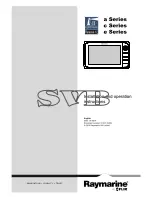
24
IMCA M 229
Here are some further examples of Mini RadaScan performance in North Sea operating
conditions:
Figure 23 – Range and bearing plots at 160 m – Standard deviation: ≤ 0.095 m
Figure 24 – Range and bearing plots at 160 m – Standard deviation: ≤ 2.09 mrad
Under typical operating conditions Mini RadaScan can be expected to provide 1-
σ
accuracy of
0.25 m in range and 2.5 mrad in bearing out to a range of 500 m. At greater distances errors
grow roughly in proportion to distance.
As the distance decreases below 250 m, the effect of sea reflection diminishes and accuracy
improves. Sea reflection has no significant effect at less than 125 m and 1-
σ
accuracy of 0.1 m
in range and 1 mrad in bearing are commonly achieved.
11.5
Frequently Asked Questions
1. Does Mini RadaScan operate on the same principles as X-band radars?
No. Although Mini RadaScan operates at 9.25 GHz, it uses frequency-modulated continuous wave
(FMCW) emission rather than the pulsed emission of conventional radar. (FMCW is the technology
found in the vehicle speed radar guns used by law enforcement agencies around the world.)
2. Mini RadaScan operates at a similar frequency to conventional X-band radar. Do the
systems interfere with one another?
No, not if the installation is carried out as instructed. Care must be taken to ensure that Mini RadaScan
is not installed at the same horizontal level as the X-band radar. The recommended level separation
distance is at least 3 m.
Summary of Contents for Mini RadaScan
Page 4: ......






































